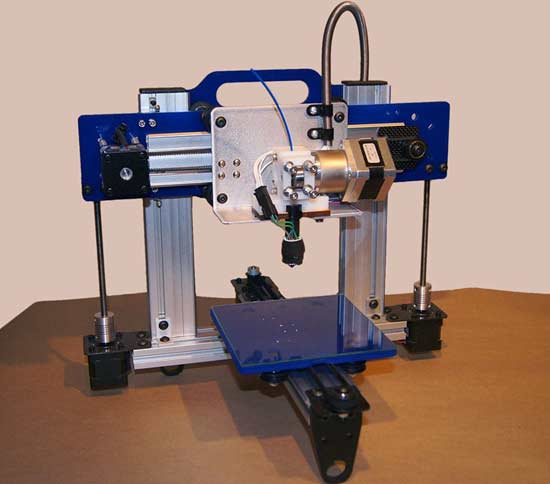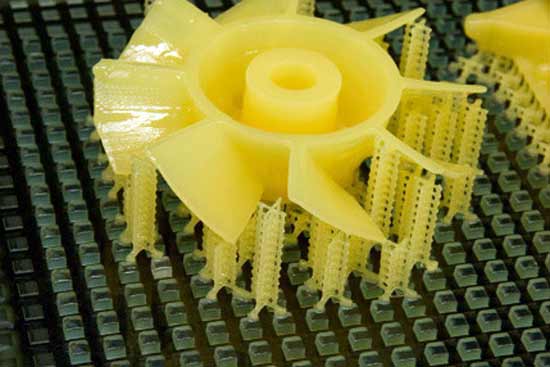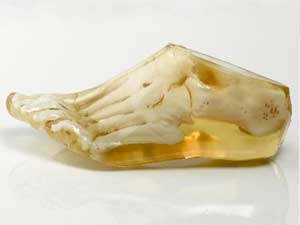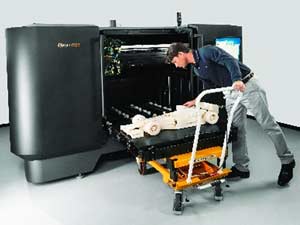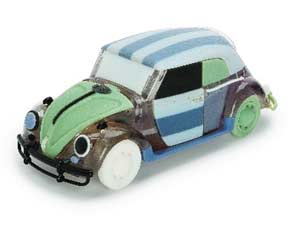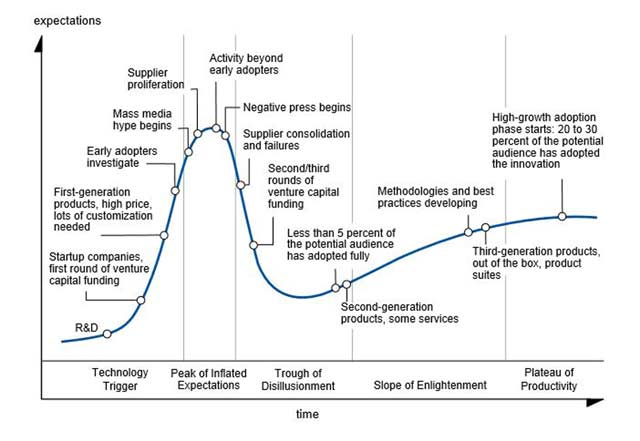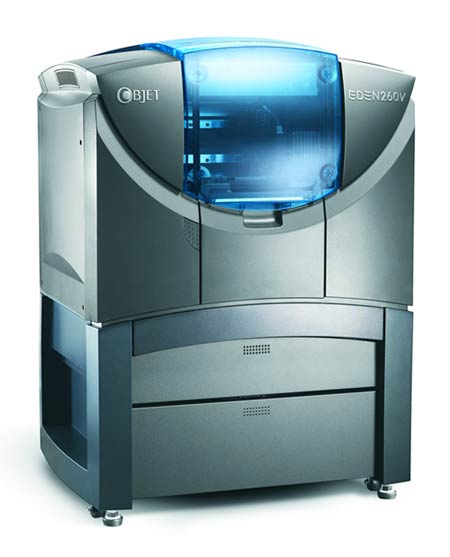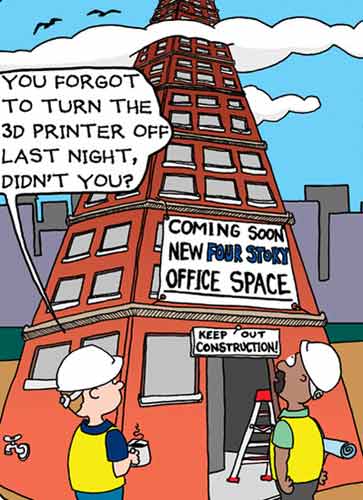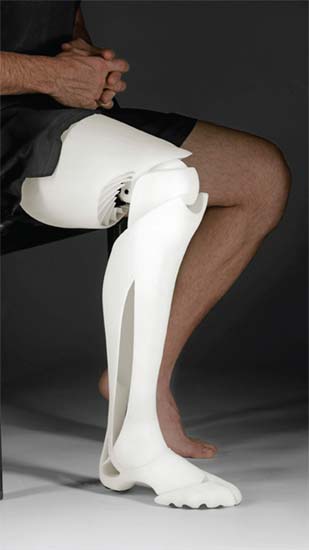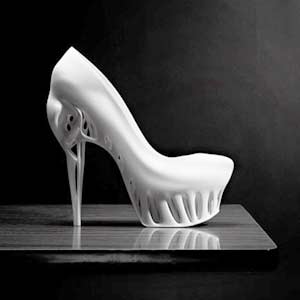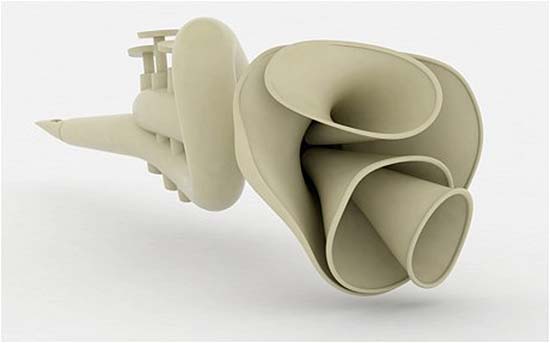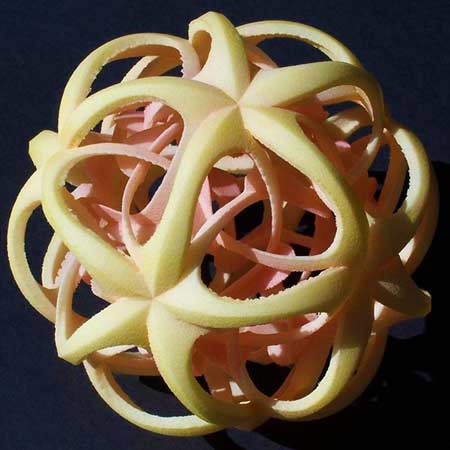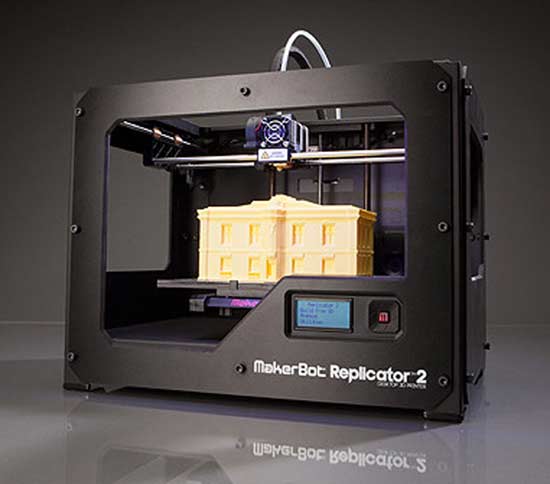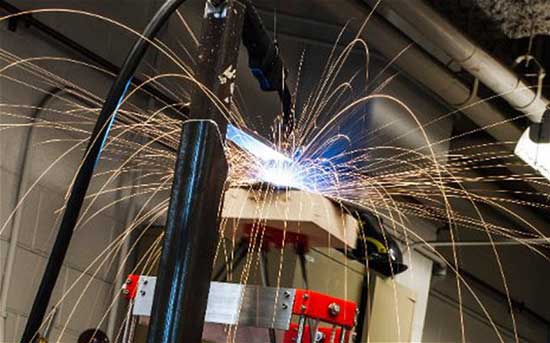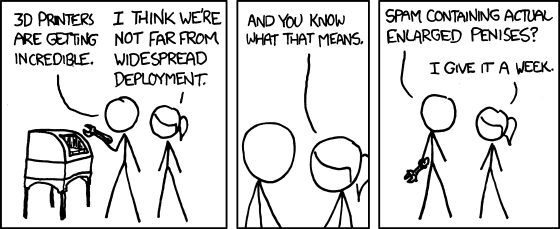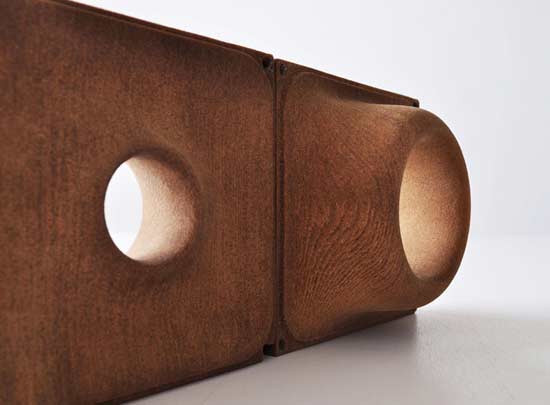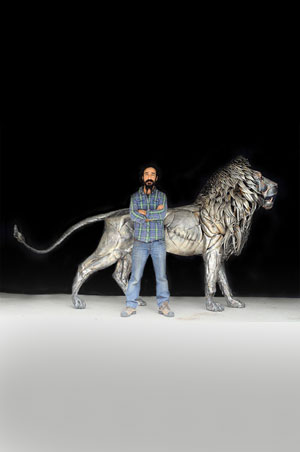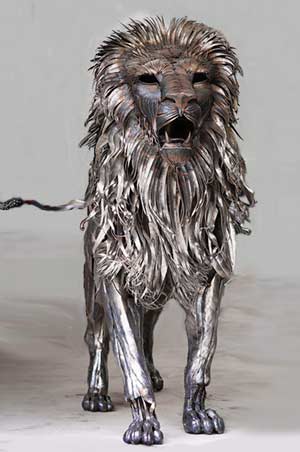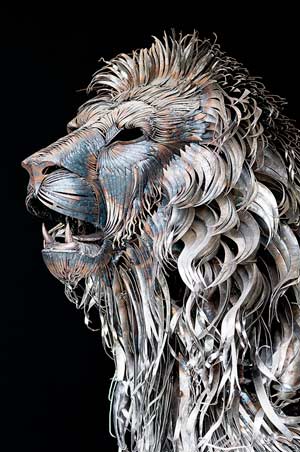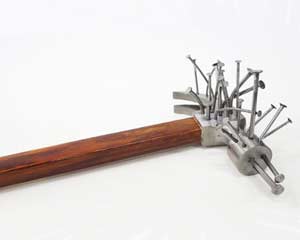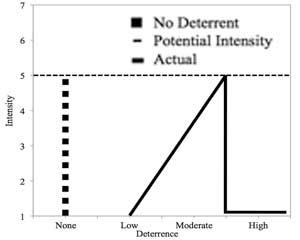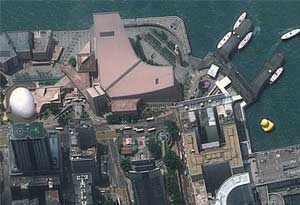I’ve missed more than 9,000 shots in my career. I’ve lost almost 300 games.
26 times I’ve been trusted to take the game winning shot and missed.
I’ve failed over and over and over again in my life.
And that’s why I’ve succeeded.
3D Printing / Additive Manufacturing
Jan. 30, 2014
3D printing is a process for making a physical object from a 3-dimensional digital model, typically by laying down many successive thin layers of a material. Wikipedia calls it additive manufacturing and says it’s making just about any shape of solid object from a digital model by adding successive layers of some material. It further describes a 3D printer as “an industrial robot” under computer control.
Machining, on the other hand, is subtracting successive small layers to achieve the shape one desires—sort of the mirror image of 3D printing.
In theory, 3D printing should be more efficient than mass production as it is “on-demand manufacturing” or “instant manufacturing“—that is, making a part that’s exactly what you need when you need it. To counterbalance this however, on-demand production is always more expensive on a per-unit basis. On-demand 3D printing works well for vanity sculptures such as a hand-painted 3D-printed lion, because it’s not worth injection-moulding a 5,000-item run unless you have reason to think you’ll need that many lions, but obviously each lion in that size run will cost far less to produce. However, your costs will be higher overall if you end up tossing out 4,700 of the cheaper lions because there’s no demand for them.
The term “3D printing” is conventionally used for additive technologies only, such as sintering and slicing or otherwise laying down layers of material then binding them together via various methods.
Chuck Hull of 3D Systems Corporation created the first working 3D printer in 1984. Several different 3D printing processes have been invented since. The printers were originally large, expensive, and highly limited in what they could produce. That’s rapidly changing.
How Do 3D Printers Work?
To begin, a 3D printer reads a design from a file. Many designs are free on the internet. Others can be made from photographs taken at various angles, or 3D modelling software such as Maya, SketchUp, OpenSCAD, or Blender, or from a service that turns your designs into a proper file. One handheld $30,000 scanner used for 3D printing captures surface information in full 24-bit colour and renders a complete picture of an object for art, anthropology, entertainment, and web applications, providing texture mapping that can be saved separately. Need less accuracy? Then use your mobile phone. Photographs and scanners detect the outsides of scanned objects, so internal structures and cavities won’t be captured. A scan or photo doesn’t account for moving parts or mechanisms, either—and even if it could, there’d likely be no way to reproduce such pieces using current 3D printing technology. Therefore, today there are few really useful objects that can be directly duplicated, especially with a home 3D printer. Whatever. Getting the file you need to begin will only get easier in the future. (But, as with music sharing, it’s easy to slide over into patent or copyright infringement, especially if you’re making something you want to sell.)
After reading the designated file, the 3D printer begins laying down successive layers of liquid, powder, paper or sheet material to build a model from a series of cross sections. These layers are glued or continuously fused and/or cooled, or handled with some other technology to create the final shape. The primary advantage of 3D printing is its ability to create almost any shape or geometric feature, including (with some caveats) overhangs and complicated interlocking pieces. Construction of a model with contemporary methods can take anywhere from several hours to several days, depending on the method used and the size and complexity of the model. Though the printer-produced resolution is sufficient for many applications, printing a slightly oversized version of the desired object in standard resolution and then removing material with a higher-resolution subtractive process can achieve greater precision when required. Some additive manufacturing techniques are capable of using multiple materials in the course of constructing parts and some print in multiple colours and colour combinations simultaneously.
Some designs may need supports when building. Supports are removable or dissolvable upon completion of the print, and are used to support overhanging features during construction. This extra plastic isn’t specified by the model file, but is automatically added by the software when it thinks the object might otherwise collapse during the printing process. In the case of one bit of software reviewed, this took the form of a low-density plastic mesh that filled in empty spaces in designs chosen to be printed. It’s possible to turn it off, but doing so may indeed result in models falling apart mid-print. Even for simple models that can stand up on their own, this particular software started every job by printing a supporting “raft” of material that served as a stable base. This isn’t obligatory, but some plastics have a tendency to lift up at the edges as they cool and contract, so items may deform if not attached to a base. As a result, when you’ve finished printing, there’s almost always some quantity of extraneous support material attached, which must be manually trimmed away. (Toward this end, retail packaging for printers often includes a scalpel and a pair of snips.) This can leave scars and crisscross markings that may detract from the item’s appearance.
A large number of additive processes are now available. These can have differences in the way the layers are deposited or in the way they’re joined. They put differing limits on what materials may be used for “ink.” Some methods melt or soften material to produce layers. The material might be tiny beads that merge under increased heat. Other printing methods cure liquid materials using different sophisticated technologies. One such is stereolithography, wherein successive thin layers of ultraviolet-curable liquid material are laid atop each other. In laminated object manufacturing, thin adhesive-coated layers of paper, polymer, or metal are cut to shape and joined together. Printers that work directly with metals are generally expensive, though that seems to recently be changing. Metals used can include titanium alloys, cobalt chrome alloys, stainless steel, and aluminium. Electron beam melting is a similar type of additive manufacturing technology for metal parts, which melts metal powder layer by layer with an electron beam in a high vacuum, creating fully dense, void-free, and strong parts capable of being used in aircraft and on the space station. Suspended deposition uses a robotic arm to 3D print objects in a tank of gel, allowing freeform printing without the need for support structures. The gel supports the liquid resin deposited by the robot while it hardens, overcoming the need for temporary support structures. The resin used to print hardens when exposed to light; once the object is removed, the gel can be reused. The suspension of resin in 3D space allows the ability to navigate and fabricate directly on and around other existing objects within the gel. Liquid metal jet printing lays down droplets of molten aluminium. It’s still in development, anticipating a release date mid-2014.
Every method has advantages and drawbacks in cost and durability. Costs today vary from US$100 to $500,000 or more for big industrial systems like the laser-sintering machines capable of printing aerospace parts in titanium (these can cost up to US$1 million). Considerations for purchase of a 3D printer include usability features such as a housing enclosure, an LCD screen, or a heated platform (necessary for certain types of plastics). Other considerations are resolution (smaller tolerances indicate a more precise print), print size (bigger is better, though kinematics can allow flexible fabrics to be made folded to fit into a smaller space, then unfolded when done), printer weight (heavier is better because there’ll be less wobble), and print speed (faster printers may have lower quality). Certainly the cost of the hardware matters, as does the cost (and choice) of supplies and the requirement for one or more specific colour capabilities. The two most common plastic 3D printing materials are ABS (Acrylonitrile Butadiene Styrene) and PLA (PolyLactic Acid). ABS is similar to Lego material (tough stuff) and requires a heated print platform to print. It also has a distinctive smell of burning plastic, which fills the room. (Actually burning ABS plastic is a serious matter as it releases carbon monoxide and hydrogen cyanide, both of which are poisonous.) PLA comes in a wider variety of colours and doesn’t need a heated print bed.
- Multi-material printing enables a functional product to be created with different properties without the need to bring together components.
- Objet’s Connex 3D printer (now owned by Stratasys) is the only commercially-available system able to print multi-materials (at least as of May 2013, though a group at MIT believes it’s only a matter of time—maybe 5 years—and will bring “a radical shift”). Objet boasts 120 print materials, all based on acrylic photopolymer resins that mimic other materials.
- As the hype around multi-material printing gathers pace, researchers are keen to highlight that, in reality, the industry has yet to develop a true multi-material printer than can compete with traditional manufacturing techniques.
You can now 3D print in a host of different materials such as polyamide (nylon), glass filled polyamide, stereolithography materials (epoxy resins), food, rubber, clay, silicone, wax, ceramics, photopolymers, polycarbonate, titanium, steel, gold, silver, and brass. The number of print heads or extruders on a 3D printer indicate how many colours / materials you can print at once. If you wish to print a blue and green model of earth for instance, you’ll need a printer with two or more print heads because printers with only one print head can print only one colour per model.
Many of the best 3D printers include USB cables, power supplies, maintenance tools for taking care of the machine and for cleaning up prints, starter filament cartridges, and more. If you decide to buy a 3D printer to use with your home computer, look for included accessories like a USB cable, SD card, flash drive or WiFi capability. Some printers need to stay connected during the printing process, but some can be unplugged from your computer after the files are transferred to the printer. Also, many 3D printing companies do not offer warranties.
A few words about sourcing cheap plastic filaments. One can go directly to China for filament by using one of the popular manufacturer sales sites. As an example, say mythical supplier CheapFilaments on Alibaba sells a variety of ABS and PLA filament. For PLA, CheapFilaments sells a one-kilogram spool for between US$5 and $15. This is significantly less expensive than conventional sources, who can charge USD$30 to $50 or more. CheapFilaments provides volume discounts, with the highest volume receiving the lowest price of $5 per kilogram. However, they do offer the ability to purchase a single spool at $15. Note: if you go to the Alibaba site, be certain to verify the minimum order requirement as some manufacturers require a minimum quantity of 1,000 kilograms, for example. You might be ordering a shipping container of filaments by accident! You also must pay for shipping (which can vary widely) and any import duties imposed by your region. CheapFilaments does offer PLA in a decent set of colours. However, there are a couple more potential concerns: colour consistency between batches may be an issue. Sure, the spool was a great deal, but you may have a surprise when you load the next spool. Also, filament diameter needs to be very consistent to avoid jams. CheapFilaments happens to specify good characteristics in this regard, but some manufacturers don’t even mention it. Finally, colours are sometimes implemented with toxic lead-based pigments. You don’t want lead particles floating around your home! Look for a safety statement from the manufacturer.
Where Is 3D Printing in the Hype-Cycle?
I would guess that 3D printing is currently in the Peak of Inflated Expectations phase.
3D Commercial Printing
Today, 3D Printers have evolved to make a variety of objects using a laser or extruder (the material output part of the printer, best described as a futuristic hot glue gun) that move along an X, Y and Z axis to build an object in 3 dimensions layer by layer, sometimes only microns thick at a time depending on the desired resolution of the object. This method eliminates a lot of wasted materials as any leftover substrate can be immediately used on another project, alleviating the need for injection moulding, setup costs, cutting, sanding, drilling and having leftover scraps of material (common with traditional manufacturing methods). The most impressive part of 3D printing is the low overheads due to no need to do all that. Costs for single parts become standardised in relation to the costs of the material being used. The most stimulating possibility of this technology is its potential for unlimited customisation. If you don’t like a feature of the part or object you’re creating, simply tweak the file to include your improvement and print another. Three-dimensional printing may have a profound impact as it allows the creation of parts in shapes that conventional techniques can’t achieve, resulting in more efficient designs, for example in aircraft wings or in heat exchangers.
The most important thing to remember about commercial 3D printing is that its real value lies in producing something that’s not possible or not cost-effective to produce with existing technology.
Applications include:
- Aerospace – In December 2013, BAE Systems fitted and successfully test flew a Panavia Tornado with parts made by 3D printing. The military is rumoured to use 3D printers for resupplying parts for fighter jets aboard carriers and in the combat theatre. 3D-printed aircraft components are 65% lighter but as strong as traditional machined parts, representing savings and reduced carbon emissions (for every 1 kilogram reduction in weight, airlines save around US$35,000 in fuel costs over a plane’s life). Aircraft maker Boeing has printed around 22,000 parts for their jet planes. Hard-to-find spare parts are now 3D printed—one American carrier frequently grounded its ageing McDonnell Douglas MD-80 jets because of leaking toilets. Production of these aircraft ceased long ago, so the airline struggled to find spare parts. But now the plumbing is 3D printed in aerospace-grade plastic (neither igniting nor producing noxious fumes in extreme heat). Airbus is exploring the application of titanium powder-based additive-layer manufacturing for constructing large-scale complex components and say they’re optimistic they can 3D print a multi-material craft using a printer the size of an aircraft hangar by 2050. (The 3D printer would be around 80 × 80 metres in size.)
- Space – As early as 2010, work began on applications of 3D printing in zero or low gravity environments. The primary concept involves creating basic items such as hand tools or other more complicated devices “on demand” versus using valuable resources of fuel and cargo space to carry spares into space that may not be needed. NASA is preparing to launch a 3D printer into space, hoping to demonstrate that it’s better to make spare parts on the fly. The Sinterhab Project is researching a lunar base constructed by 3D printing using lunar regolith powder as a base material along with microwave sintering to create solid building blocks from abundant raw material. The Mars Rover has some 70 custom parts which were 3D-printed (before it left, of course).
You can buy an Eden 260V Education Value Bundle for one year that consists of the printer, software, start-up kit, water jet, DELL host computer running Windows 7, 17” LCD monitor, replacement print head, white print supplies, installation and training, plus extra resin (there’s a choice of 17 different materials) for less than $130,000. It can continuously print for up to 72 hours, taking approximately 1 hour to print a 1.5 inch cube.
- Engineering – Employing additive layer technology offered by 3D printing, terahertz devices which act as waveguides, couplers and bends have been created. The complex shape of these devices could not be achieved using conventional fabrication techniques. Commercially available professional grade printers create structures with a minimum feature size of 100 µm, which are DC sputter-coated with gold (or another metal) to create a terahertz plasmonic device. These devices (in case you were wondering) offer 1,500 times more powerful systems for imaging and sensing applications. Low-energy terahertz radiation can enable doctors to see deep into tissues without the damaging effects of X-rays, or allow security guards to identify chemicals in a package without opening it.
- Architecture – In Bahrain, large-scale 3D printing using a sandstone-like material has been used to create unique coral-shaped structures, which encourage coral polyps to colonise and regenerate damaged reefs. These structures have a more natural shape than other structures used to create artificial reefs and also have a neutral pH (which concrete does not).
- Construction – A use being developed is building printing, or using 3D printing to build buildings. This is not a mature technology, but may eventually allow faster construction for lower cost. It’s currently being proposed for construction of off-Earth habitats. The printer required (as you might expect) is quite large, so don’t expect them to replace builders, bricks and mortar anytime soon.
- Industrial and Automotive Design – TV personality Jay Leno uses a 3D printer to make custom and hard-to-find parts from scratch for his collection of classic cars. 3D printers are often used for prototyping or to make the moulds used for production runs.
- Marine – a container ship’s computer may one day have a database of 3D images of every part on the ship, from nuts and bolts up to complex engine parts. Should any of these fail, the printer could produce a suitable, made-to-spec replacement in a matter of minutes to hours. (Really? At sea? Only when it’s calm, or anytime?)
- 3D Printers – The RepRap project is an initiative to develop a 3D printer that can print most of its own components. RepRap (short for Replicating Rapid prototyper) uses a variant of Fused Deposition Modelling (FDM), an additive manufacturing technique. The project calls it Fused Filament Fabrication (FFF) to avoid trademark issues around the “fused deposition modelling” term. As an open design, all designs produced by the project are released under a free software license, the GNU General Public License. To date, the RepRap project has released 4 official 3D printing machines: “Darwin” (March 2007), “Mendel” (October 2009), “Prusa Mendel” and “Huxley” (2010). Hundreds of variations now exist. The core developers have named each release after famous evolutionary biologists, as “the point of RepRap is replication and evolution.” Variants, however, are often named after individual designers or the names the designers prefer. Due to the self-replicating ability of the machine, authors envision the possibility to cheaply distribute RepRap units to people and communities, enabling creation of complex products and scientific equipment without need for expensive industrial infrastructure.
- Dental and Medical Industries – Researchers at Washington State University have developed an artificial bone “scaffold” which can be 3D printed, potentially allowing doctors to quickly print replacement bone tissue for serious injuries. 3D printers can produce casts that mimic the bones that they’re supporting. These custom-fitted casts are open-weave—no room for autographs—but this allows the wearer to scratch itches, wash the affected area, and openly ventilate any injury. Then the cast can be recycled to create more casts. Clear, custom braces have been printed for hundreds of thousands of patients across the globe. Specifically, stereolithography is used to fabricate moulds from 3D scan data of each patient’s dental impressions. Polymer is then cast to create the clear braces or else ceramic is used to create a tooth cap.
- Biotech (human tissue replacement) – Organs and body parts are being built using inkjet techniques. Layers of living embryonic stem cells are deposited onto a gel medium or sugar matrix and slowly built up to form 3D structures including vascular systems. China has committed almost $500 million towards the establishment of 10 national 3D printing development institutes. In 2013, Chinese scientists began printing ears, livers and kidneys, with living tissue. Researchers at Hangzhou Dianzi University actually went as far as inventing their own 3D printer for these complex tasks. Dubbed the Regenovo, it’s a 3D bio-printer, which takes under an hour to produce either a mini liver sample or a 4- to 5-inch ear cartilage sample. Fully functional printed organs are predicted within the next 10-20 years. Researchers at the University of Hasselt, in Belgium successfully printed a new jawbone for an 83-year-old Belgian woman, who is now able to chew, speak and breathe normally again. Scientists at Princeton University in the US used off-the-shelf printing tools to create a functional ear that can ‘hear’ radio frequencies beyond the range of normal human capability due to a coil antenna embedded in the cartilage. In 2012 researchers at Tufts developed a ‘tattoo’ made up of a biological sensor and antenna that can be fixed to the surface of a tooth (I’m not sure what the purpose was, but bridging the divide between biology and electronics represents a formidable challenge that needs to be overcome to enable the creation of smart prostheses and implants—perhaps it was related to that).
- Fashion – 3D printed clothing became available at the high end of the market in the 2010s and was shown at the Amsterdam Fashion week in 2010. In 2013, burlesque performer Dita Von Teese wore a gown printed into rigid nylon, specifically designed for her body. At the Voltage show in Paris in January 2013, Dutch fashion designer Iris van Herpen showed a flexible 3D dress on the catwalk (very short video). The first known 3D-printed shoes were launched in 2012.
- Custom Hearing Aids – Laser sintering fabricates custom hearing aids based on 3D scans of ear-canal impressions. The resulting aid fits perfectly, almost hidden from view.
- Education – The use of 3D scanning technologies allows replication of precious or delicate cultural heritage artefacts without the use of moulding techniques that in many cases would be too invasive, particularly where direct contact could harm the object’s surface.
- Geographic Information Systems (GIS) – Firms are using GIS data in conjunction with 3D printers to make models of houses that are structurally perfect for their locations. This experimental technology, called ‘Contour Crafting’, may soon be able to be used to rebuild not just homes but entire ports or harbour cities to withstand future earthquakes that devastate places like Haiti.
- Food – Cornell Creative Machines Lab has demonstrated that it’s possible to produce customised food with 3D hydrocolloid printing. NASA has announced funding for a project to create food in space using a 3D printer. The concept is being developed by a $125,000 grant; it combines powders to produce food with the smell, texture and taste of traditional dishes. Students at New York University have designed a printer to produce fillings for burritos. Other printers are devoted to printing chocolates in unique shapes.
- Other – Print quadcopters, SLR cameras, musical instruments, bird houses, garden gnomes, and more. (Or just buy and re-sell massed-produced ones?) The first 3D-printed bicycle has now been made from nylon powder, strong enough to replace steel or aluminium and does not require conventional maintenance or assembly. It’s “grown”, allowing complete sections to be built as one piece; wheels, bearings and axle are incorporated within the process and built at the same time. Work is currently underway using a 3D printer to build computer circuits with a mix of plastic, metals and ceramics. Eyeglasses can be printed to exactly fit with no screws or welded joints. For Halloween, couples can each have 3D masks printed of their faces, then confuse their friends by each wearing the other’s mask. One company prints shells for pet hermit crabs. Repairmen fixing domestic appliances might print simple components in the backs of their vans. Even if there’s no access to original design files, 3D scanners can reverse-engineer items and then print them out. Researchers at Harvard University 3D printed the world’s first lithium battery the size of a grain of sand using layers of tightly interlocking electrodes. These micro-batteries may be used in the future to power tiny robots or medical devices. Nike is using 3D printing to prototype and manufacture football shoes for players of American football while New Balance is 3D-printing custom-fit shoes for professional athletes.
The Chinese government is currently investing heavily in developing their 3D printing industry and now own some of the world’s largest 3D printers. Their astronauts sit in 3D-printed seats shaped specifically to their bodies. Engineers are working on a rival to the short-haul jets made by Boeing and Airbus using giant 3D-printing machines (one of them 12 metres long) to print parts (including wing spares and fuselage frames) in titanium.
Australian organisations are currently developing capabilities in advanced 3D printing and the related fields of materials research and imaging in order to develop local industry. Investors would be well advised to stay abreast of new developments this field and the potential impact they can have on portfolios.
Printing techniques, especially fused filament, are heavily dependent on nozzle behaviour and avoidance of 'blobbing’ at the stop and start. A printer that can resolve to a tiny dimension in terms of its motion control is often restricted to coarser results by its deposition process. It can be difficult to compare one printer to another and come away certain of which is more suitable. Modern additive manufacturing techniques use liquid, solid, and powder polymers, powder metals, and ceramics. Individual material options are limited to thermoplastics, elastomers, ferrous metals (steel alloys), non-ferrous metals (aluminium, bronze, cobalt-chromium, and titanium), and some ceramics (silicon dioxide or titanium dioxide). New composites with other materials may offer greater opportunities to extend the present limitations of materials.
3D Personal Printing
This 4-inch in diameter nylon sculpture is made by solid freeform fabrication. The nylon is yellow on the exterior and pink inside. An important component in tissue engineering is the 3D scaffold, which guides cells to form target tissue, maintains tissue volume, and provides sufficient structural support during tissue regeneration. Until recently, conventional scaffold fabrication methods have not satisfied the requirements for tissue regeneration. The development of additive fabrication technologies known as solid freeform fabrication (SFF) has made it possible to construct scaffolds with very fine structures and complex geometries using computer-aided design (CAD) data acquired from medical imaging of patients. Due to the advantages of SFF technology, it’s rapidly becoming the technique of choice. Moreover, recent research has demonstrated that a variety of biomaterials are suitable for use in various SFF systems. The “printing ink” is a cell-seeded alginate hydrogel modified to be compatible with extrusion through a printing deposition tool. Or you can just make a work of art like this one instead.
According to Wikipedia, one study found that open source 3D printing could become a mass market item because domestic 3D printers can offset their capital costs by enabling consumers to 3D print common household objects. After all, once you can download a coffee maker or print out a new set of kitchen utensils on your personal 3D printer, who’d visit a retail store again? Probably you should, because, once the novelty wears off, unless you have a really good home printer, standard items you can buy locally are likely still better quality and probably cheaper. As of 2012, domestic 3D printing had mainly captivated hobbyists and enthusiasts but not gained recognition for practical household applications. You can make a working clock, you say? So? Personal 3D printing is often used for ornamental objects and decorative pieces such as necklaces, rings, and handbags. Websites associated with home 3D printing tend to include backscratchers, coat hooks, and doorknobs. In other words, things are still in the hobby stage. However! In 2013, a 3D printer was used to print a duck foot, which let a crippled duckling walk again.
RepRap is one of the longest-running projects in the desktop category. The RepRap project aims to produce Free and Open Source Software (FOSS) 3D printers, whose full specifications are released under the GNU General Public License. Their goal is to make printers capable of replicating themselves by printing many of their own parts to create still more machines. Research is underway to even enable them to print circuit boards and metal parts. Rapid development of open source 3D printers is enabled through conduits such as Thingiverse and Cubify. It is hoped that in the future these will assist initiatives in sustainable development by making technologies available to local communities.
The cost of 3D printers has decreased dramatically since about 2010, with machines that used to cost $20,000 costing less than $1,000 today. For instance, as of 2013, several companies and individuals are selling parts to build various RepRap designs, with prices starting at about €400 / US$500. The open source Fab@Home project has developed printers for general use with anything that can be squirted through a nozzle, from chocolate to silicone sealant and chemical reactants. Printers following the project’s designs are available from suppliers in kits or in pre-assembled form at prices in the US$2,000 range. Several new 3D printers are aimed at the small, inexpensive market. One professional-grade 3D-printer costs US$1,499 and says it has “no fumes nor constant rattle during use.” MakerBot has unveiled a new model, which is the size of a mini-fridge and costs US$6,499. It can print objects the size of a human head. (A smaller version can create cupcake-sized objects and costs a mere US$1,375.) Stratasys, based in Minneapolis (and which itself merged with Israel-based Objet last year), has bought MakerBot, a company based in Brooklyn that’s sold more than 22,000 printers since it was founded 5 years ago. Its new Replicator 2 (pictured above) accounted for half those sales in 2013 alone. A series of 3D printing patents related to Selective Laser Sintering (SLS), a technology allowing additive manufacturing from a broad set of powder materials, has started to expire. More are expiring in 2014 and it is the later retiring patents that are some of the most exciting to low-cost printer manufacturers. These patents could provide them the ability to make printers that are more affordable and that print at higher resolutions. It’s possible a new series of low-cost printers could soon begin to proliferate.
While commercial metal printers are already available, they generally cost over half a million dollars. But a printer that creates objects out of steel has been developed by Michigan Technological University. It’s comprised of under $1,500 (£913) worth of materials, making it cheaper than many off-the-shelf commercial plastic 3D printers—affordable enough for home use. For now, it is better off in the hands of a shop, garage or skilled do-it-yourselfer since it requires more safety gear and fire protection equipment than typical plastic 3D printers. However, detailed plans, software and firmware are all freely available and open source, meaning anyone can use them to make their own. Manufacturers such as Solidoodle, RoBo, and RepRapPro have introduced low-priced models and kits.
Some companies offer software for 3D printing as a support for hardware manufactured by other companies.
Potential Problems
- In a world of 3D printing, people may not be protected under traditional product liability law if they buy a risky home-printed object and get hurt. Rather, they could be left to pursue harder-to-prove negligence lawsuits. Product liability law only applies to 'commercial’ sellers, defined as those engaged in the business of selling or otherwise distributing products. Since most 3D printing processes use proprietary polymers that are not well characterised and may be weaker than their traditionally-manufactured counterparts or have a strength that isn’t uniform due to the layer-by-layer fabrication process, parts are often weaker in the direction of the build than a similar part made by a different technique. Finally, parts made on different machines often have varying properties.
- The technology is not fully matured. File formats are still changing. STL ( STereoLithography) is a file format native to the stereolithography CAD software created by 3D Systems (it’s also known as Standard Tessellation Language). This file format is supported by many other software packages and is widely used for rapid prototyping and computer-aided manufacturing. Unfortunately, STL files describe only the surface geometry of a 3D object without any representation of colour, texture or other common CAD model attributes. It specifies ASCII and binary representations (the latter being more compact). An STL file describes a raw unstructured triangulated surface by the unit normal and vertices (ordered by the right-hand rule) of the triangles using a 3D cartesian coordinate system. These coordinates must be positive numbers, there is no scale information, and the units are arbitrary. Additive Manufacturing File format (AMF) is an open standard for describing objects for additive manufacturing processes (including 3D printing). The official standard is an XML-based format designed to allow any computer-aided design software to describe the shape and composition of any 3D object to be fabricated on any 3D printer. AMF has native support for colour, materials, lattices, and constellations.
Potential Benefits
- In February 2014, key patents that currently prevent competition in the market for the most advanced and functional 3D printers will expire. These patents cover laser sintering, the lowest-cost 3D printing technology. Because of its high resolution in all 3 dimensions, laser sintering can produce goods that can be sold as finished products. So we should soon see huge drop in the price of these devices. Within just a few years of the patents on FDM expiring, the price of the cheapest FDM printers fell from $14,000 five years ago to as little as $300 today. This led to a massive democratisation of hobbyist-level 3D printers and injected a huge amount of excitement into the nascent movement of “Makers.”
- The impact of 3D printing on manufacturing, the environment, the global economy and geopolitics is likely to occur gradually over several decades. This has been the case with the Internet and personal computers. The impact of 3D printing could go beyond transforming the manufacturing process and rebalancing the global economy, especially if it contributes to changing the trajectories of some of the most worrisome trends in environmental degradation, resource scarcity and climate change. The ability to locally print almost any designable object would have strong repercussions across our society.
- Just as a written document can be emailed as a PDF and printed in 2D, a design file can be sent instantly to the other side of the planet via the Internet and printed in 3D. In a few years it is estimated that 50% of all complex parts will be made using additive manufacturing—it’s an agile and innovative technology, which will soon be state of the art, particularly once 3D bio-printing is commercialised.
3D printed Wood was developed by Emerging Objects. It’s moderately strong and a rigid material with translucency. It can be fibre-reinforced for added strength. A grain, similar to natural wood grain results from the additive layer manufacturing of the objects made with this material. The wood is made from recycled hard and soft woods.
For more detail on 3D printer manufacturers, software, and vendors, you might begin with the 3D Printing Directory.
Sources:
http://www.newstatesman.com/future-proof/2014/01/3d-printed-houses-fun-architects-irrelevant-rest-us “3D-printed houses: fun for architects, irrelevant for the rest of us” by Ian Steadman, New Statesman, 7 January 2014.
http://3d-printers.toptenreviews.com/ “2014 Best 3D Printers: Side-By-Side Comparisons” from Top Ten Reviews, 2014.
http://en.wikipedia.org/wiki/3D_printing 3D Printing from Wikipedia.
http://www.wipo.int/wipo_magazine/en/2013/02/article_0004.html “3-D printing and the future of stuff” by Catherine Jewell, WIPO Magazine, April 2013.
http://news.stanford.edu/news/2013/december/3d-legal-issues-121213.html “3-D printing creates murky product liability issues, Stanford scholar says”, by Clifton B Parker, Stanford News, 12 December 2013.
http://www.nzherald.co.nz/business/news/article.cfm?c_id=3&objectid=11185221 “3D printing industry takes shape” by Peter Svensson, The New Zealand Herald, 13 January 2014.
http://privatewealth.nab.com.au/nabprivate/insights/category/markets_and_investments/the_3d_printing_revolution.html “The 3D Printing Revolution” from Nab Private Wealth Insights, 19 June 2013.
http://www.economist.com/news/technology-quarterly/21584447-digital-manufacturing-there-lot-hype-around-3d-printing-it-fast “3D printing scales up” from The Economist Technology Quarterly Q3, 7 September 2013.
http://www.pcpro.co.uk/features/383671/3d-printing-the-myths-and-the-reality “3D printing: the myths and the reality” from PC Pro, October 2013.
http://www.scientificamerican.com/article/3-d-printing-will-be-a-counterfeiters-best-friend/ “3-D Printing Will Be a Counterfeiter’s Best Friend” by Thomas A Campbell and William J Cass, Scientific American Forum, 5 December 2013.
http://qz.com/106483/3d-printing-will-explode-in-2014-thanks-to-the-expiration-of-key-patents/ “3D printing will explode in 2014, thanks to the expiration of key patents” by Christopher Mims, Quartz, 21 July 2013.
http://en.wikipedia.org/wiki/Additive_Manufacturing_File_Format Additive Manufacturing File Format from Wikipedia.
http://www.deskeng.com/articles/aaawrs.htm “Advanced Sintering, Compact Printers, and Handhelds Lead the Way” by Susan Smith, Design Engineering, 15 April 2010.
http://www.kurzweilai.net/better-than-x-rays-a-more-powerful-terahertz-imaging-system “Better than X-rays: a more powerful terahertz imaging system” from Kurzweil: Accelerating Intelligence, 29 March 2013.
http://modelyst.com/blog/china-filament-for-your-3d-printer-yes-or-no/ “China Filament for Your 3D Printer: Yes or No?” by Taylot Amarel, 3D Model News via Modelyst, 26 December 2013.
http://www.atlanticcouncil.org/images/files/publication_pdfs/403/101711_ACUS_3DPrinting.PDF “Could 3D Printing Change the World? Technologies, Potential, and Implications of Additive Manufacturing” by Thomas Campbell, Christopher Williams, Olga Ivanova, and Banning Garrett, Atlantic Council Strategic Foresight Report, October 2011.
http://boingboing.net/2012/02/15/documentary-about-inventor-of.html “Documentary about inventor of giant 3D printer that can print a house” by Cory Doctorow, Boing Boing, 15 February 2012.
http://www.gartner.com/it/content/1395600/1395613/august_4_whats_hot_hype_2010_jfenn.pdf “Emerging Technology Hype Cycle 2010: What’s Hot and What’s Not” by Jackie Fenn, Gartner Webinar, 2009.
http://en.wikipedia.org/wiki/Fused_deposition_modeling Fused deposition modeling from Wikipedia.
http://www.economist.com/news/technology-quarterly/21584449-how-3d-printers-work “How 3D Printers Work” from The Economist Technology Quarterly Q3, 7 September 2013.
http://www.telegraph.co.uk/technology/10315053/Most-ambitious-3D-printing-projects.html “Most ambitious 3D printing projects” by Richard Gray, The Telegraph, 17 September 2014.
http://creo.ptc.com/2013/07/01/new-materials-open-doors-for-expanded-use-of-3d-printing/ “New Materials Open Doors for Expanded Use of 3D Printing” by Barb Schmitz, PTC Creo, 1 July 2013.
http://www.economist.com/blogs/schumpeter/2013/08/3d-printing “Out of the Box” from The Economist: Schumpeter Blog, 6 August 2013.
http://lawitm.com/post-one-part-one-patents-and-3d-printing/ “Patents and 3D Printing” by Paul Banwatt, Law in the Making, 20 February 2013.
http://www.economist.com/blogs/schumpeter/2013/06/3d-printing “Power shift” from The Economist: Schumpeter Blog, 21 June 2013.
http://www.economist.com/node/18114327?story_id=18114327 “Print me a Stradivarius: How a new manufacturing technology will change the world” from The Economist, 10 February 2011.
http://en.wikipedia.org/wiki/RepRap_Project RepRap Project from Wikipedia.
http://www.theengineer.co.uk/channels/design-engineering/in-depth/the-rise-of-multi-material-3d-printing/1016242.article “The rise of multi-material 3D printing” by Ellie Zolfagharifard, The Engineer, 9 May 2013.
http://www.dezeen.com/2013/07/23/sci-arc-student-develops-freeform-3d-printing-with-undo-function/ “Southern California Institute of Architecture student develops freeform 3D printing with 'undo’ function” by Marcus Fairs, De Zeen Magazine, 23 July 2013.
http://creativemachines.cornell.edu/Tissue_Eng “Solid Freeform Fabrication in Tissue Engineering” from Cornell Creative Machines Lab, no date given.
http://en.wikipedia.org/wiki/STL_%28file_format%29 STL (file format) from Wikipedia.
http://en.wikipedia.org/wiki/Talk:3D_printing Talk: 3D printing from Wikipedia.
http://www.atlanticcouncil.org/blogs/futuresource/tech-horror-film-or-american-renaissance “Tech Horror Film or American Renaissance?” by Mathew J Burrows, Atlantic Council, 9 December 2013.
http://www.theengineer.co.uk/electronics/news/us-engineers-print-functioning-artificial-ear/1016200.article “US engineers 'print’ functioning artificial ear” from The Engineer, 2 May 2013.
http://www.telegraph.co.uk/technology/news/10507574/US-researchers-develop-low-cost-metal-3D-printer.html “US researchers develop low-cost metal 3D printer” by Sophie Curtis, The Telegraph, 10 December 2013.
http://www.forbes.com/sites/gcaptain/2012/03/06/will-3d-printing-change-the-world/ “Will 3D Printing Change the World?” by Brad Hart, Forbes, 6 March 2012.
http://gizmodo.com/renewable-recyclable-3d-printing-with-wood-and-salt-486558507 “Wood, Salt, and Wonder: The Renewable Future of 3D Printing” by Kelsey Campbell-Dollaghan, Gizmodo, 2 May 2013.
The Distillery
Life is short, but the years are long.
— Robert Heinlein, Methuselah’s Children (1958)
The days are long… but the years are short.
— Gretchen Rubin
Aslan
Created from nearly 4,000 pieces of metal scraps, Aslan (Turkish for lion), is a recent sculpture by Istanbul-based artist Selçuk Yılmaz. The piece took nearly a year of work and involved hand-cutting and hammering of each individual metal piece. The final work weighs roughly 550 pounds (250 kilograms).
An Eye for the Sky
Storm chaser Mike Hollingshead has been enduring foul weather since the late 90s, clocking some 20,000 miles a year in his car as he stalks thunderstorms and other extreme weather occurrences waiting to capture perfect shots. I’m impressed by how good he can make those plains states look.
Differences
- Finally, revenge.
- Playing (moderately) hard to get is an advantageous dating strategy because people are more attracted to a potential partner when the feeling is only moderately reciprocated—too strong and the person seems needy, too weak and the goal seems unattainable. Apparently individuals “turn off” and conserve emotional resources when the response is either too little (he or she is saving resources for a different potential partner) or too much (no one else wants him or her). Overall, a greater intensity of attraction is elicited when a potential partner plays moderately hard to get. This is all common sense, but there’s a very abstract theory that says all this, and a few studies show it actually applies to at least some things.
- It could also say, “Microwave My Hard Drive”.
Time for Trees
Ducking His Responsibilities
- Spot the yellow rubber duck in the Hong Kong marina on the right? Also, is that a giant duck egg on top of one of the buildings on the left?
- I guess he’s sightseeing? The giant inflatable Rubber Duck installation by Dutch artist Florentijn Hofman floats on the Parramatta River, as part of the 2014 Sydney Festival.
- A dead duck floats on Hong Kong’s Victoria Harbour. The 16.5-metre-high inflatable sculpture was deflated after some of its parts broke.
Tragedy Narrowly Avoided
|
|
|
Fog, and a Week Later, Snow
- Part of the New York City Skyline peeks through thick fog in this view from Pier A Park in Hoboken, NJ, 15 January 2014. Travel delays were reported for commuters due to the fog as were delays at airports from Washington to New York City.
- The tower of New York’s World Trade Center rises through a blanket of fog. Manhattan’s on the left, Brooklyn’s to the right, New Jersey’s on the bottom.
- The tip of the Empire State Building peeks through thick fog.
- The Mall is empty in Central Park.
- Castle and lake are quiet in Central Park in New York City, Wednesday 22 January 2014. The temperature didn’t rise above 14°F (-10°C) but bone-chilling gusts made it feel as low as -13°F (-25°C).
- Two birds bathe in the waters from the pool flow in the ravine in Central Park, NYC.
The Coca Cola Salesman in Saudi Arabia
A disappointed Coca-Cola salesman returned from his assignment to Saudi Arabia. A friend asked him, “So why weren’t you successful with the Saudis?”
The salesman explained, “When I got posted, I was very confident that I could make a great sales pitch—but I had this little problem: I don’t speak Arabic. So I decided to convey my message through 3 posters. The first one shows a man lying in the hot desert sand totally exhausted and fainting. The second one shows him drinking Coca-Cola. The last one shows him now totally refreshed. I had dozens of these printed up and posted them all over the place.”
“Terrific! That should’ve worked!” said the friend. “So—what went wrong?”
“It should have worked,” said the salesman, “but no one told me they read from right to left!”
Pessimist: Oh, this can’t get any worse!
Optimist: Yes, it can!
Q: Why did the chicken cross the Mobius Strip?
A: To get to the same side.
“Today a young man on acid realised that all matter is merely energy condensed to a slow vibration,
that we are all one consciousness experiencing itself subjectively,
there is no such thing as death, life is only a dream and we are the imagination of ourselves.
Now, here’s Tom with the weather.”
 Animals
Animals Animation
Animation Art of Playing Cards
Art of Playing Cards Drugs
Drugs Education
Education Environment
Environment Flying
Flying History
History Humour
Humour Immigration
Immigration Info/Tech
Info/Tech Intellectual/Entertaining
Intellectual/Entertaining Lifestyles
Lifestyles Men
Men Money/Politics/Law
Money/Politics/Law New Jersey
New Jersey Odds and Oddities
Odds and Oddities Older & Under
Older & Under Photography
Photography Prisons
Prisons Relationships
Relationships Science
Science Social/Cultural
Social/Cultural Terrorism
Terrorism Wellington
Wellington Working
Working Zero Return Investment
Zero Return Investment